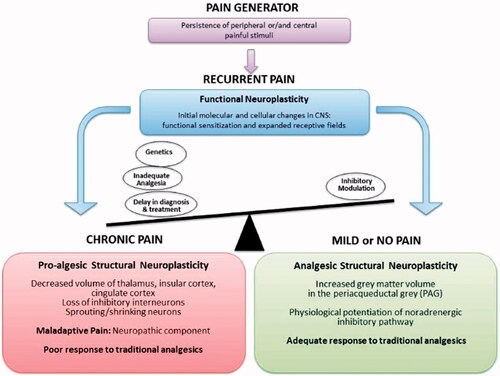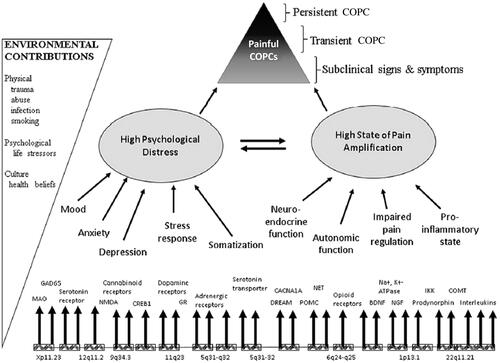Figures & data
Figure 1. From the physiological perspective, an imbalance between enhanced ascending nociceptive inputs and inadequate inhibitory descending pathways is responsible for pain chronificationCitation45. Reproduced with permission from Coluzzi et al.Citation45.

Figure 2. This model depicts likely determinants that contribute to the risk of onset and maintenance of common chronic overlapping pain conditions (CPPCs). These factors are determined by genetic variability and environmental events that determine an individual’s psychological profile and pain amplification status. These two primary domains are interactive and influence the risk of pain onset and persistence. Likely modifiers of the interaction between genetic and environmental factors include sex and ethnicityCitation72. Abbreviations. MAO, monoamine oxidase; GAD65, glutamate decarboxylase; NMDA, N-methyl-D-aspartic acid; CREB1, CAMP responsive element binding protein 1; GR, glucocorticoid receptor; CACNA1A, calcium voltage-gated channel subunit alpha1A; POMC, proopiomelanocortin; NET, norepinephrine transporter; BDNF, brain-derived neurotrophic factor; NGF, nerve growth factor; IKK, IkB kinase; COMT, catechol-O-methyl transferase.

Table 1. Main factors influencing the pain chronification process.
